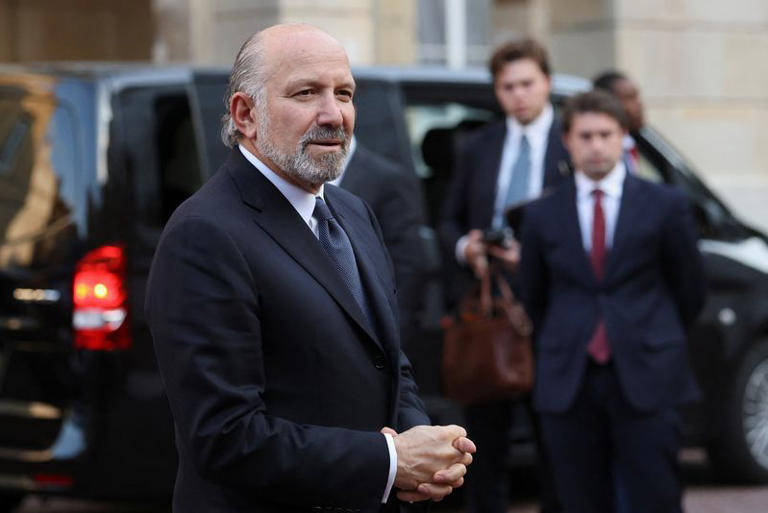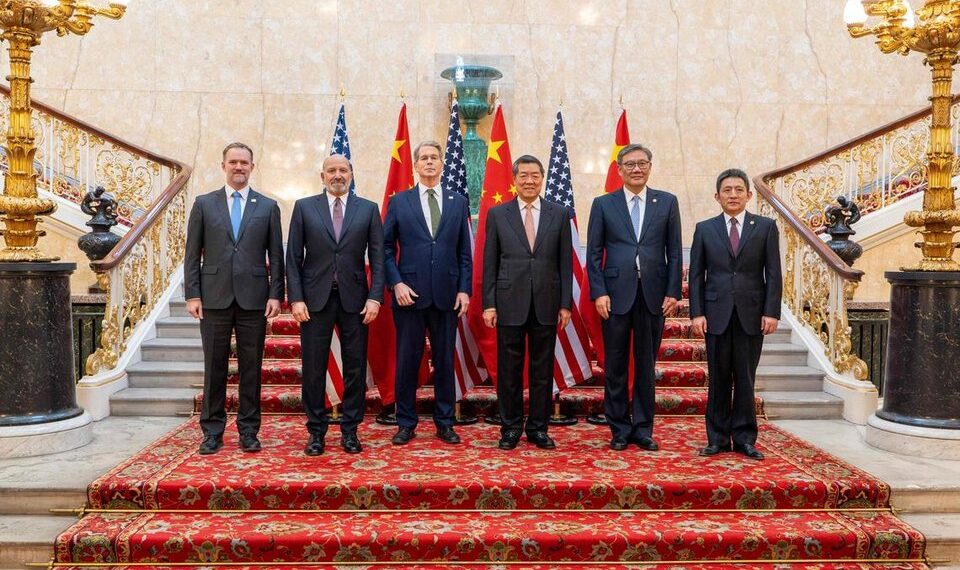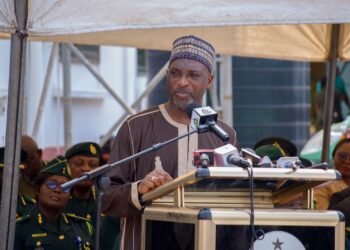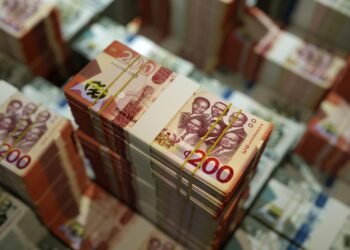The United States and China have agreed on a “framework” on trade after two days of talks in London aimed at deescalating tensions between the sides.
The apparent breakthrough comes a month after Washington and Beijing announced a 90-day pause on most of their tariffs following talks in Geneva.
Having agreed to step back from a full-blown trade embargo at a first round of talks in Geneva in May, both sides are seeking agreement after they accused each other of trying to throttle supply chains with a raft of export controls.
While the specifics of the framework announced were unclear, US Commerce Secretary, Howard Lutnick told reporters that the framework puts “meat on the bones” of a deal reached last month in Geneva to ease retaliatory tariffs. Its implementation had faltered over China’s curbs on critical mineral exports.
He added that the deal also would remove some US export restrictions that were recently put in place. “We have reached a framework to implement the Geneva consensus and the call between the two Presidents,” Lutnick said.

Lutnick said the sides would move forward with the framework pending its approval by US President Donald Trump and Chinese President Xi Jinping, who held a 90-minute phone call on trade last week. “Once the Presidents approve it, we will then seek to implement it,” Lutnick told reporters.
Lutnick indicated that US measures imposed in response to a slowdown in Chinese exports of rare earths, a key issue dividing the sides, would likely be eased once supplies of the critical minerals ticked up.
Lutnick said that China’s restrictions on exports of critical minerals and magnets to the US would be resolved as a fundamental part of the framework agreement.
The talks have been led by US Treasury Secretary, Scott Bessent, Lutnick and US Trade Representative Jamieson Greer, with the Chinese contingent helmed by Vice-Premier He Lifeng.
The inclusion of Lutnick, whose agency oversees export controls for the US, indicates just how central rare earths have become.
China holds a near-monopoly on rare earth magnets, a crucial component in electric vehicle motors, and its decision in April to suspend exports of a wide range of critical minerals and magnets upended global supply chains.
In May, the US responded by halting shipments of semiconductor design software and chemicals and aviation equipment, revoking export licences that had been previously issued.
Talks Deemed Candid
Chinese Vice Commerce Minister, Li Chenggang called the talks “professional, rational, in-depth and candid.”
“The two sides will bring back and report to our respective leaders the talks in the meeting as well as the framework that was reached in principle
“We hope that the progress we made in this London meeting is conducive to increasing trust between China and the United States.”
Li Chenggang
All eyes were on the outcomes of negotiations as both sides were at an impasse over export restrictions, with US officials earlier accusing Beijing of slow-walking approvals for shipments of critical minerals.
The world’s two biggest economies were also seeking a longer-lasting truce in their escalating tariffs war, with levies reduced temporarily.
Asian stock markets rose on hopes of a de-escalation in the trade tensions, which have cast a shadow over the global economy.
The World Bank on Tuesday lowered its forecast for global growth from 2.7 percent to 2.3 percent, pointing to the ongoing uncertainty around trade.
Japan’s Nikkei 225 was up almost 0.5 percent as of 03:30 GMT, while the Hang Seng in Hong Kong and CSI 300 in mainland China were about 1 percent and 0.8 higher, respectively.
READ ALSO: US Military Aid For Ukraine To Be Reduced In Upcoming Defence Budget



















